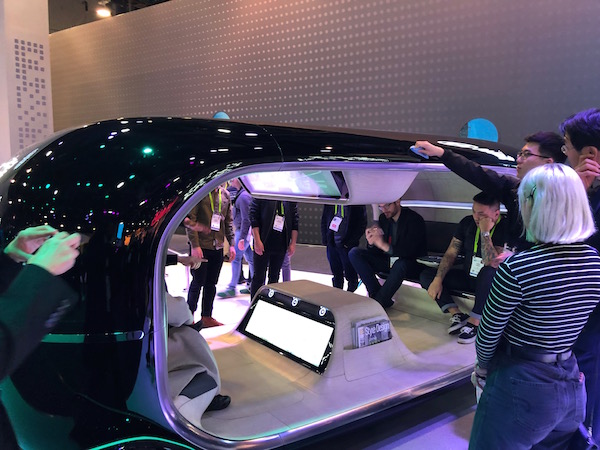Last week, Las Vegas was the place to be. That’s if you thrive on the business of consumer technologies. (Consumer Electronic Show) took over The Las Vegas Convention Center for four days. Thousands of brands and startups gathered to introduce the next generation of technology innovations. So much new technology was unveiled!
The first CES took place in New York City in June 1967. Since then, thousands of products have been displayed and announced at the annual show (including many that have transformed the way we live). 3D Printing, AR/VR and Gaming, Artificial Intelligence, drones, and wearables are popular industry categories that invested in space at CES to show off their latest inventions.
The vibe of the show is an excited and fast-paced trek through a crowded floor, with glimpses on either side of technologies that may be coming soon to our homes, cars, and offices. While there are many American companies and attendees at CES, last year’s statistics show that 32% of attendees came from outside the U.S., bringing an international perspective to the technologies people want to see. Each year we see a stronger push to make booths and floor setups more engaging, more memorable, and more fulfilling as an experience. There were some incredibly creative and futuristic designs, and we spent some time in particular drawn in by the experiences offered by car manufacturers.
When you think of an electronic show, cars don’t always come to mind. However, CES is one of the top 10 automotive shows in the US! Auto companies use the floor to show off the latest technology their cars offer, and a looking glass into the future of the industry. This year Hyundai, KIA, and Bosch had us very intrigued by the creative and unique technologies in their vehicles, and we were thrilled to experience a closer look through stunning displays and booth setups filled with interactive displays.

Both KIA and Bosch gave us a preview of what a world with self-driving pod like cars would be like. The pods are about the size of an SUV and have seats with the ability to move around to create the perfect space for meetings or family time. Our Executive Director, Jen Fisch, had the opportunity to attend CES and saw up close and personal what the pods could do. “I love the idea that in the near future driverless pods give us the opportunity to create experiences as we move around the city or country. They can be a living room, a meeting room, a game room or a theater room which would give us back time in our day and allow us to connect with people more vs the solo driving experience of today.” We loved one of the ways Kia showed off a world with self-driving pods, allowing attendees to experience the facial recognition software that determines mood, and uses music and lighting to create a more relaxed environment.
Hyundai showed off their “walking car” which they refer to as “Elevate”, the Ultimate Mobility Vehicle (UMV). This mobility vehicle has wheels and legs that give it the ability to maneuver through many terrain scenarios. It has the capability step over a 1.5m gap and climb over obstacles 1.5m tall. Elevate has four robotic legs that has five degrees of freedom. Hyundai hopes that this new concept would play a big role in the first responder industry, making it faster to reach those in critical need during natural disasters. Hyundai’s space at CES showed off interactive elements to draw attendees in, including games, quizzes, and interactive design modules. While the “Elevate” demos were awesome, we were impressed that they created an experience that complemented their technological advances, letting us get our hands on the goods and having some fun. It was a more memorable way to learn about a walking car than a simple theater setup.
We’re excited to see what roads will look like in the next 20 years after seeing the future of automotive moving towards driverless cars. The driver’s experience will be changing, freeing up time for everyone to connect and enjoy each other’s company especially during long drives. We’re also excited to see that companies at important shows like CES continue to push for more interactivity, attendee participation, and enjoyment. Attendees and companies alike have incredibly creative ideas about the future of our world, and the best way to explore those ideas together is create an enjoyable experience and gather feedback. Simulated experiences are helpful for introducing radical ideas to an audience in a safe environment. The idea of cars driving us from A to B while we take a nap or catch up on emails is certainly radical. Videos, digital ads, and written content, all have their place in helping an end user understand what the world would look like without the need to steer our vehicles, but there’s no replacement for allowing that audience to experience the pods and mood-setting technology in the real world. That’s the power of real experiences, and the reason so many companies are all-in on experiential marketing.